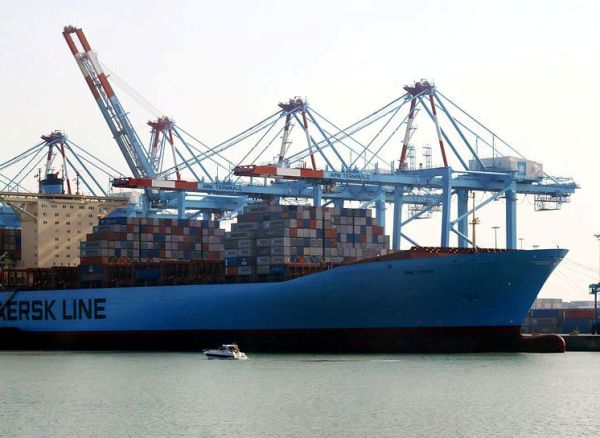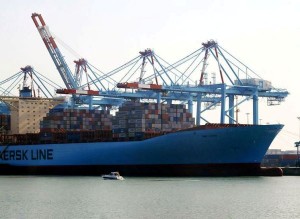Global two-way container traffic grew by just 1.4% in full-year 2015, largely pushed down by the widening trade imbalance for the East-West trades, according to a new analysis by Drewry Maritime Research.
For the 14 trades regularly covered in Drewry’s Container Insight Weekly, volumes only increased by around 1 million TEUs in 2015 from 2014 to 80 million TEUs, which is about 41% of the estimated world total.
However, performances across the trades differed widely. The main East-West trades only managed headhaul growth of 1.7% (equal to an extra 625,000 TEUs). Other routes showed varying growth rates from a high of 16.4% for Asia-to-East Coast North America to a low of a 4% contraction for Asia-to-Mediterranean. There were similar variations for the East-West backhaul trades and both legs of the North-South trades.
Tracking two-way volume gains and losses by trade, meanwhile, shows that seven trades were positive contributors, while seven dragged down the average.
The biggest drag on volumes has been the backhaul on the East-West routes. Return traffic in 2015 was lower than it was in 2012 by some 200,000 TEUs. Over the same period, East-West fronthaul volumes added 4.5 million TEUs, while the aggregate North-South volumes added 2.2 million TEUs and 1 million TEUs for the headhaul and backhaul, respectively.
This has two important implications, said Drewry: “Firstly, it suggests that Asian importers are looking to broaden their sourcing origins to regions such as the Middle East and South Asia away from North America and to a lesser extent Europe, reducing the long-term outlook for those export markets; and secondly, that East-West carriers will have to endure higher equipment repositioning costs as the trade imbalance widens.”
In 2015, carriers operating between Asia and North America had to reposition 1.2 million TEUs more than they did in 2014 due to widening imbalances. Between Asia and Europe (including Mediterranean), the amount of repositioning decreased by about 600,000 TEUs, but the total remained very high at around 7.8 million TEUs.
The report further observed how the trade imbalance has been growing wider for East-West routes collectively since 2012. In 2015, there were 2.2 TEUs moved for every one backhaul TEU in the Asia-Europe, trans-Pacific, and trans-Atlantic lanes. “The aggregate ratio was below x2 until 2014. For individual trades, the widest gap exists on the Asia-WCNA route at x2.7, up from x2.1 in 2012,” it said.
“The East-West trades were a bad place to be for ocean carriers in 2015. Carrier profitability/losses in 2016 will be heavily influenced by the exposure to hot or cold trades, while carriers should also expect additional associated empty container repositioning costs from the widening East-West services trade gap,” said Drewry.
Photo: Hans Hillewaert






